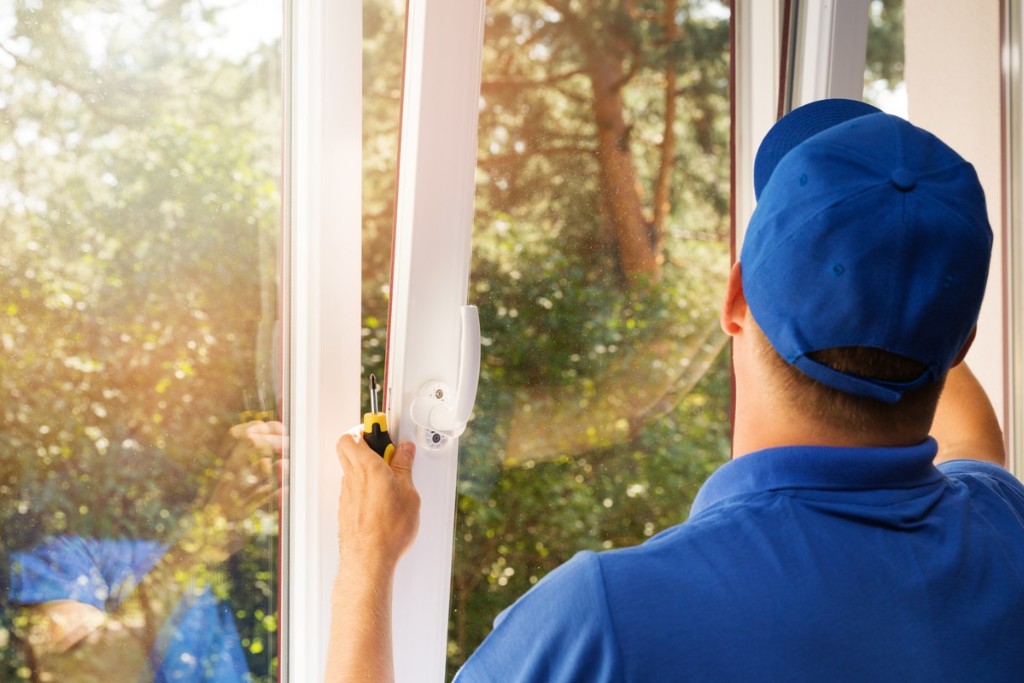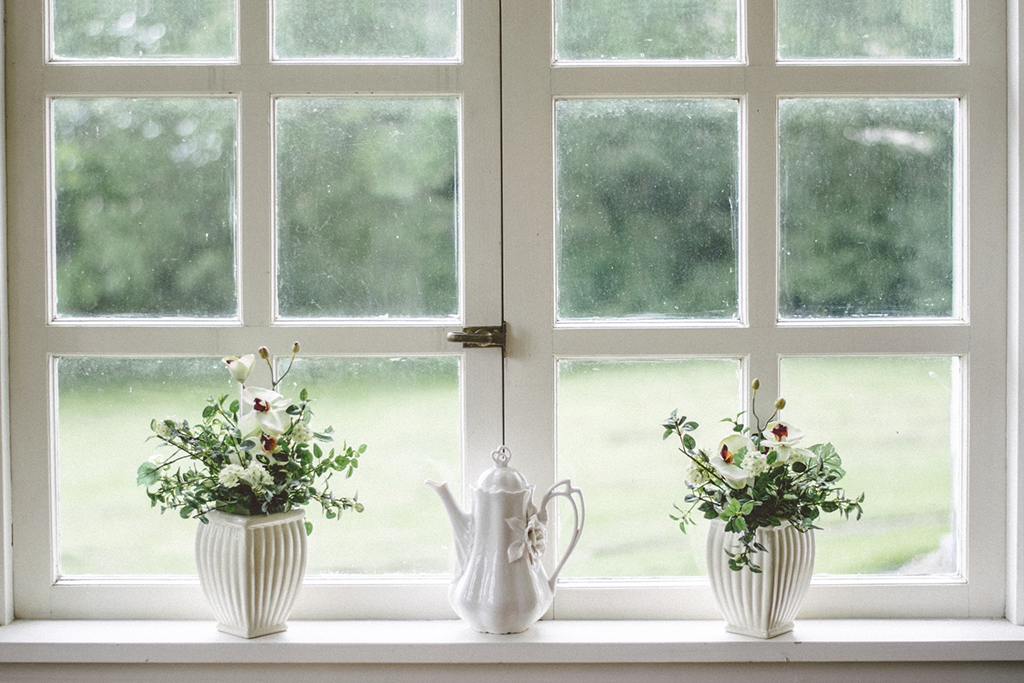Getting new windows has an 85% return on investment.
It’s one of the top ten ways you can improve your home for both value and comfort. If you want to lower your monthly energy bills and update the look of your home, windows are a great place to start.
You may have already heard the terms new construction window and retrofit window. These are the two common ways new windows get installed in your home. The similarities end there, and if you have wondered what makes them different, read on.
New Construction Windows
Windows classified as new construction windows are replacement windows that licensed contractors can install. What sets new construction windows apart is the amount of work that goes into them. A contractor will build the entire frame, siding, trim, and glass from scratch. This means they can make sure everything fits together perfectly and looks exactly how it should.
New construction windows completely replace the old windows. Even the frames of your old windows get removed. The outside siding often cuts back, and the new window frame is installed. If you have a homemade from brick, stone, or stucco, then remember that they may have to remove some to put in new windows.
Retrofitting a window will involve replacing the glass. The window frame inside the stucco itself stays then a new glass, and energy-efficient window is installed. The process is known as retrofitting because you take a new window and place it into an older frame. The process can be completed without stucco, drywall, or paint damage.
In some instances, the frame may have to be repaired and can cause difficulty if it is not plumbed to the wall. This process is an excellent choice for those who don’t wish to remove the window frames or who don’t need to.
Advantages of a New Construction Window
By their very definition, these windows are brand new. If you have substantial damage to your window frames that would require expensive repair, this may be a good option for you. Areas with high moisture, mold, and rot can sometimes benefit from new frames.
Another advantage of new construction windows, they are uniform and will fit flush to the house. This is because the window frames are secured to the home’s frame. Work can begin once the space is prepared and the old material is removed.
Advantages of a Retrofit Window
A retrofit window is quick and easy to install. If no substantial repairs are needed to the window frame, this kind of replacement can save you money. The process of retrofitting windows does save the window frame. If you live in an older home, this can be key to retaining the value of your home.
With a window retrofit, you won’t have to repair any damage to the outside of your home. There will be no change to the placement and size of the window. Any original materials will not have to be reconditioned or replaced either.
Disadvantages of New Construction Windows
If you have new construction windows installed, your home will change. The contractor will have to remove a section of the exterior wall of the house. This is because the new frame will have to be placed in the wall.
Once this is done, you will have to repair or replace the siding or other building material that was disturbed during the installation. This can add to the cost of what is already an expensive proposition. Repairing and replacing siding can cost between $600 to $1,200.
New construction windows can also change the look of your home. They will look modern, and if that doesn’t fit your home’s exterior, it may be jarring. This is more pronounced in older homes, but it can also be evident if a house has a more rustic theme.
Disadvantages to Retrofit Windows
A retrofit window will have one major disadvantage. It relies on the older window frame for the process to go fast. If the window frame is not flush or has settled, the installation can be more difficult. Even with these difficulties, it’s unlikely to cost as much as a new construction window.
If you wish to change the shape and size of your windows, a retrofit would not be appropriate for you. In that case, you’d need to have the entire frame replaced. This isn’t what happens in a retrofit operation, so only those who want to retain their original frames should consider it.
When to Choose Retrofit vs. New Construction Windows
Whichever way you choose to go, the process will improve your home’s value and look. While the frame may be the same, a new retrofit window will look nice. If you switch from single-pane to double-pane windows, you can expect to save money on energy with both.
Having windows replaced and repaired will benefit your home either way. The core of the question comes down to what you need and what you want. Both options are viable, but a retrofit would be appropriate if you don’t want to spend a lot and like your current window configuration.
If you want to change the look of your house entirely and are comfortable spending the money to do so, a new construction window might be better for you. You should also consider the area you live in, and if you are in an HOA, you might have to consider the bylaws.
Installation Process and Timeline Differences
The installation timeline between retrofit and new construction windows varies significantly. A retrofit window installation typically takes 1-2 hours per window, allowing most homes to be completed within 1-2 days. New construction window installations often require 3-4 hours per window due to the extensive work involved, potentially extending the project to 3-5 days for an average home.
Understanding installation processes can help set proper expectations. Retrofit installations focus primarily on the window opening itself, while new construction installations involve multiple steps: removing exterior materials, installing new frames, weatherproofing, and restoring the exterior finish. This difference in complexity explains both the time and cost variations between the two options.
Weather Protection and Energy Efficiency Considerations
Both window types can provide excellent energy efficiency, but their effectiveness depends on different factors. Retrofit windows rely heavily on the condition of the existing frame and weatherproofing. A properly installed retrofit window in a sound frame can match the energy efficiency of new construction windows, potentially reducing energy costs by 15-25%.
New construction windows have the advantage of complete weatherproofing from the ground up. The nailing fin – a feature unique to new construction windows – creates a superior moisture barrier when properly installed with weatherproofing materials. This integrated approach can be especially valuable in areas with severe weather conditions or high moisture exposure.
Frame Materials and Long-Term Performance
The choice between retrofit and new construction windows also impacts long-term maintenance requirements. Modern frame materials used in both types include vinyl, aluminum, wood, and composite materials. However, new construction windows allow for complete frame material selection, while retrofit options must work within existing frame limitations.
Vinyl frames, common in both types, require minimal maintenance and provide excellent insulation. Wood frames, though requiring more maintenance, offer superior aesthetic appeal and can last 30+ years when properly maintained. Understanding these material differences helps homeowners make informed decisions based on their long-term maintenance preferences and climate conditions.
Retrofit/Replacement Window vs. New Construction Window
Any form of updating to your windows is a positive step to take. The value of a retrofit window is in the cost-saving and time-saving aspects. New construction windows cost more and take more time to install.
Both forms of window replacement will supply the same benefits once work has been completed. Remember that you won’t be able to recoup your improvement investment on windows alone fully.
If you are in Las Vegas, Nevada, and want to consider all your options, contact us at Cut-Rate Glass. We can help get you the windows you want and make your dream a reality.


